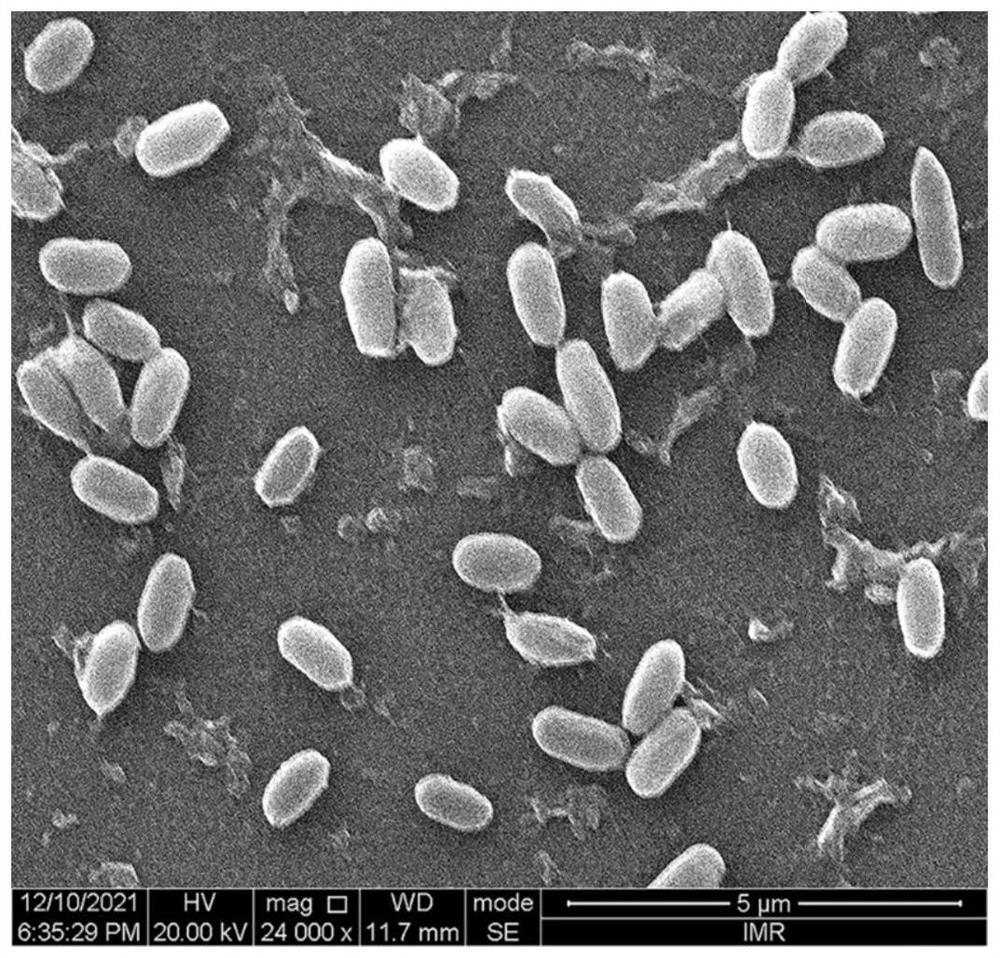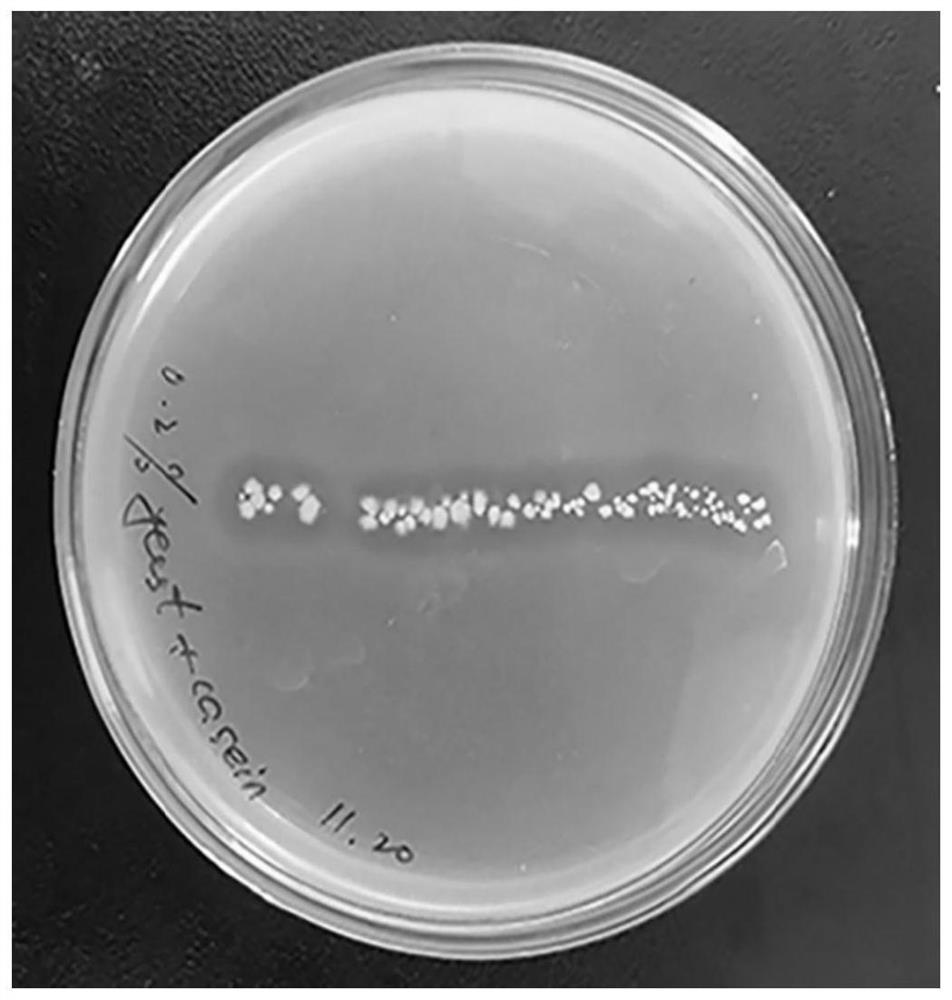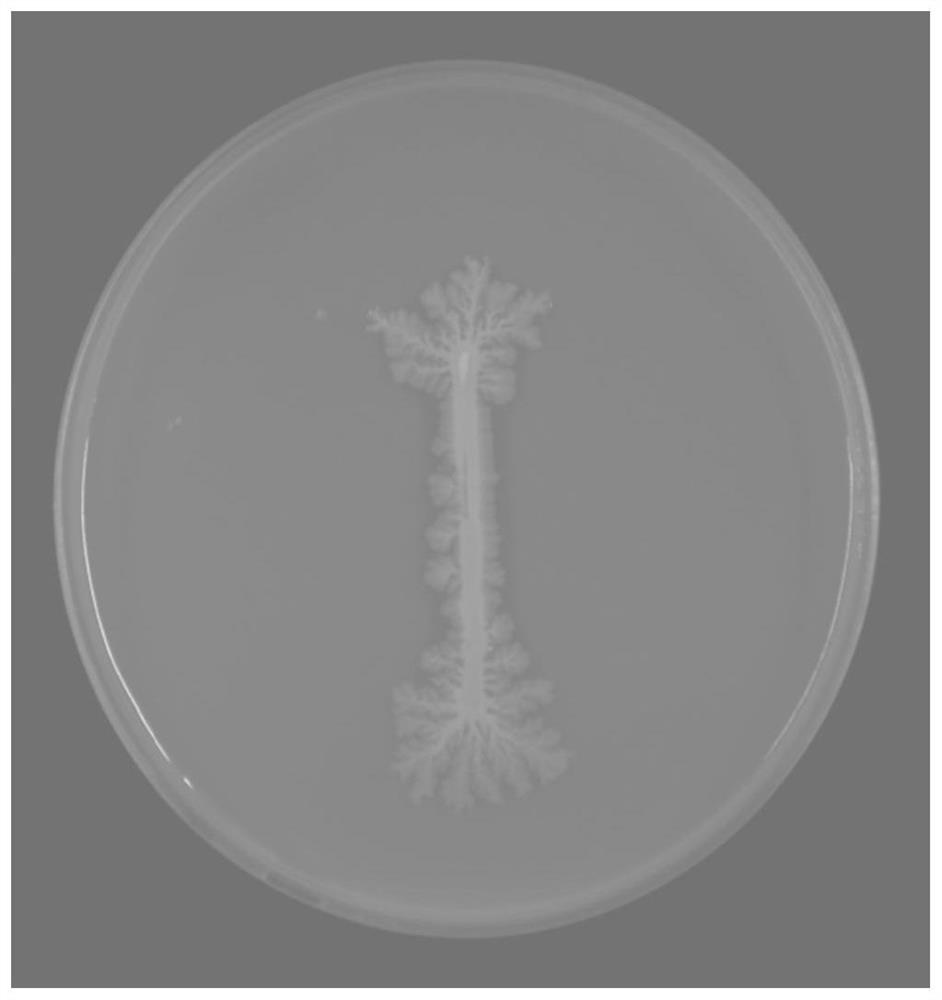Bacillus safensis PLA1006 strain, screening method and application thereof
A technology of Bacillus suffolus and screening methods, applied in the field of microbial technology and environmental biology, can solve the problems of weak PLA substrate binding, low PLA degradation efficiency, lack of evolutionary process of microorganisms, etc.
- Summary
- Abstract
- Description
- Claims
- Application Information
AI Technical Summary
Problems solved by technology
Method used
Image
Examples
Embodiment 1
[0034] Example 1 Screening of degrading strains
[0035]The soil samples collected from the Fushun domestic waste landfill were placed in a liquid medium containing polylactic acid powder for enrichment, and then coated on an emulsified plate medium. In the case of formation, the strains that can grow on the plate and form a clear transparent hydrolysis circle were screened. The components of the screening medium and the preparation method are as follows:
[0036] The basal medium composition is: 4.54g KH 2 PO 4 , 11.94g Na 2 HPO 4 ·12H 2 O, 0.5 g MgSO 4 ·7H 2 O, 1 g NH 4 Cl, 0.005g CaCl 2 ·2H 2 O, 0.002g FeSO4 7H 2 O, 0.001gMnSO 4 ·H 2 O. 0.002g ZnSO 4 ·7H 2 O and 0.2g yeast powder. Dilute to 1L with deionized water, pH 6.8-7.0.
[0037] Polylactic acid liquid medium: Add 2 g of polylactic acid powder to the above basal medium.
[0038] Preparation of emulsification plate: 0.2g of polylactic acid was dissolved in 10ml of dichloromethane, the resulting soluti...
Embodiment 2
[0040] Example 2 Degradation of polylactic acid film by Bacillus safensis PLA1006 strain
[0041] The polylactic acid film was cut into a size of 3m×3cm, accurately weighed, wiped with 70% ethanol, irradiated with an ultraviolet lamp for 30 minutes, and placed in a sterile basic medium. The Bacillus safensis PLA1006 strain was inserted into the medium, 30° C., 150 rpm shaking culture, regular sampling, drying the film to a constant weight and then weighing, and calculating the weight loss rate.
[0042] In the experiment of degrading polylactic acid film, after 10 days of culture, the weight loss rate of polylactic acid film reached 15% ( Figure 4 ), and although the control film lost weight, the weight loss rate was lower than that of the experimental group, indicating that the degradation of the PLA film was mainly caused by the action of microorganisms or their products, rather than simple hydrolysis.
Embodiment 3
[0043] Example 3 Preparation of crude enzyme solution of Bacillus safensis PLA1006 strain and analysis of polylactic acid degradation products
[0044] Bacillus safensis PLA1006 was cultured in a polylactic acid liquid medium, the medium was the same as that of Example 1, and after 7 days of culture, the supernatant was collected by centrifugation at 12,000 rpm and concentrated by ultrafiltration, which was the crude enzyme liquid. The crude enzyme solution was mixed with the PLA emulsion, incubated at 40°C for 12 hours, centrifuged at 12,000 rpm to take the supernatant reaction solution, and the sub-membrane solution after ultrafiltration (molecular weight cut-off of 3,000 Daltons) was used to measure the degradation products using a laser desorption ionization time-of-flight mass spectrometer. . The measurement results( Figure 4 ) showed that polylactic acid enzymatic hydrolysis products were found to include lactic acid monomer (mass spectrometry peak 89) and lactic acid ...
PUM
 Login to View More
Login to View More Abstract
Description
Claims
Application Information
 Login to View More
Login to View More - R&D Engineer
- R&D Manager
- IP Professional
- Industry Leading Data Capabilities
- Powerful AI technology
- Patent DNA Extraction
Browse by: Latest US Patents, China's latest patents, Technical Efficacy Thesaurus, Application Domain, Technology Topic, Popular Technical Reports.
© 2024 PatSnap. All rights reserved.Legal|Privacy policy|Modern Slavery Act Transparency Statement|Sitemap|About US| Contact US: help@patsnap.com










